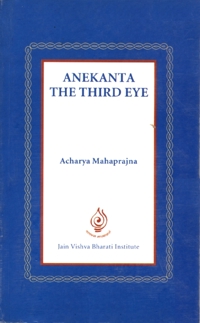
According to the anekantic perspective the basic rule of spiritual practice or for the expression of our natural emotions is:
- know and see,
- see and know.
That is spiritual practice and nothing more.
It is a waste to adopt yogic postures, do pranayama, concentration, practicing withdrawal, closing your eyes or taking a deep breath. Do not get caught in them. They have no meaning.
Is concentration also a waste? What is the use of concentration? Is a thief having less concentration or is an archer having less concentration? Does the duck have any less concentration while trying to catch a fish? While aiming a shot, does the one who shoots have less concentration?
If these are associated with knowledge then they become meaningful but if associated with consumption, then they give sorrow.
There are two clear lines: One is the line of knowledge or learning and the other is that of consumption. If along with consumption exercise also gets linked then that can also give pain. Man wants to do yogic exercise to keep his body healthy. He wants so much energy that he can consume more and more and yet not dissipate his energy. Are yogic exercises the rule of spiritual practice? Where is the rule of spiritual practice? In that pranayama should be so effective that all that is eaten is digested? In that when seated in yogamudra all the extra food eaten should be digested? Man does yogamudra and pranayama motivated by such desires. Should these benefits be the basis of yogic exercises? Where is the rule of spiritual practice? This has become the rule for consumption, for pleasure.
The emperor of ancient Rom, Nero was fond of food. When he would sit down for a meal he would keep a handful of doctors next to him. He would also keep a peacock feather with him. He would eat well and then use a peacock feather to bring it all out, to throw up. He would alternate between eating and throwing up. He would do this more than ten to twenty times a day and doctors would keep examining him.
Can medicine be a pleasurable thing? Can yogic postures and pranayama be the rules for spiritual practice? Is restraining the senses and the mind a rule for spiritual practice? Man observes restraint to understand that which is difficult to understand even in complete concentration. He observes restraint so that a part of the whole may be known. There are so many types of spiritual practice in this world. Some practice necromancy, for example. All such spiritual practices are carried out only for material prosperity.
Is mantra the rule for spiritual practice? No. Even today it is being used for material upliftment and towards selfish ends.
 Acharya Mahaprajna
Acharya Mahaprajna
